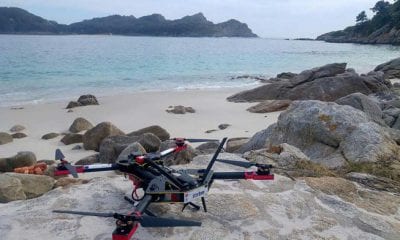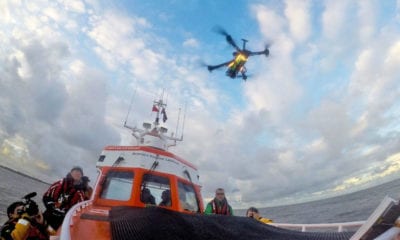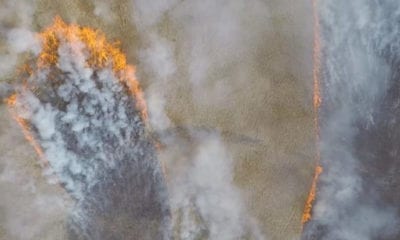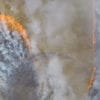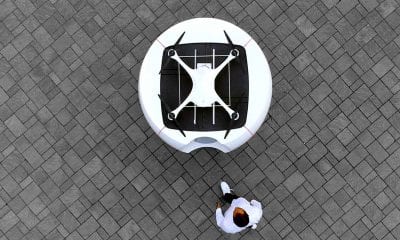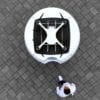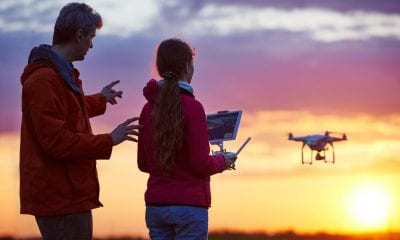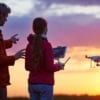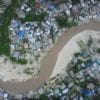
Drone Hive
Drones in Firefighting
Drones in Firefighting
Unmanned Aerial Vehicles (UAVs) or Drones, as commonly called, are being increasingly used to undertake serious work, be it deep sea research, search and rescue operations, vigilance, professional cinematography or medicine transportation. Other emerging areas include emergency communications, monitoring of environmental changes and natural disasters, among others.
Government agencies have been using drones for a while now to support their efforts across various fields of work. In Seattle, USA police have used a drone to monitor crash sites and search-and-rescue operations since 2006. The CEO of SkyFire Consulting, a public safety UAV consultancy, says close to 400 police and fire departments in the US are already using drones.
Making a Difference
Firefighting is one area that is likely to witness an increasing usage of drones. Advanced drones are capable of operating under adverse conditions like rain, strong winds or high temperatures. They can navigate through solid smoke, and able to trace people and possible exits, substantially improving the efficiency of search and rescue efforts.
The biggest advantage for drones is the speed with which they can be deployed. On the other hand, disaster monitoring using planes or helicopters could require far more time. This could prove to be the difference in being able to save lives.
Following are some of the ways drones can make a difference:
- Drones can eliminate the need for firefighters to enter the danger area, as they can aerially assess the overall situation.
- Drones are being sent as scouts to provide a bird’s view of the spread and concentration of the fire. This can help in the initial firefighting efforts and planning of the search and rescue operation.
- Drones can help in determining the fastest way to put out a fire. Thermal imaging indicates the hottest part of a fire, so firefighters know where to concentrate their efforts.
- Drones can locate the seat of a fire and its progress, aiding firefighting personnel during a structural or wildfire. Added visibility can ensure the safety of the crew during a structure fire.
- In a wildfire, drones can track the progress of the fire and help crews work upstream to find and save objects or individuals under threat.
- Drones can search for missing persons or survivors using advanced sensors and cameras.
- Drones can be used to create a grid search of a specific area. Using a search pattern can reduce the time taken to search the land, especially if the area is somewhat inaccessible to human searchers.
- Drones can transmit data to a central location (control room), aiding in quick decision making.
- Drones can be used to collect video and photo evidence for fire investigations. They can also be used to determine the origin, spread and extent of damage caused by fire.
Firefighting Efforts
The beginning of this year saw the New York City firefighting department make use of a drone for the first time to monitor an apartment building fire. The drone, fitted with high-definition infrared cameras, was used to monitor the risk of the building roof collapsing. The drone allowed a view of the roof, otherwise unavailable, while also revealing areas yet to be engulfed by flames.
In December 2016, drones were used in California to determine hot-spots during a building fire and search for survivors after the building became too unsafe. Drones were again used by the Los Angeles Fire Department to assess property damage and identify hotspots before committing resources for extinguishing fires in the Skirball and Creek fires of December 2017.
Drawbacks
Research shows that drones can play a positive role in firefighting with the advantages of timeliness of data, efficient deployment, informational advantage and safety. However other emergency response information systems outweigh the positive aspects of drones. Issues of airspace regulations and privacy laws further impede drone use in firefighting. Further research and development is needed to truly enable drones to take their place alongside firefighters.
Potential Conflicts
Private drones are an area of concern, with multiple instances of private drones interfering with firefighting efforts. Firefighting efforts in California and Arizona were impacted, as firefighting planes and helicopters had to be kept away due to concerns over potential collision with drone(s). There were 30 drone related incidents reported across the US during wildfires in 2016, while at least 12 such incidents have already been reported till July 2017.
Also, people are apprehensive about privacy issues arising from the widespread usage of drones. Efforts are being made to educate people on the benefits of such usage, especially by government agencies.
While the FAA limits drone flights to a height of 400 feet in daytime and within sight of the pilot, government agencies could be allowed certain leeway, such as flying during nighttime.
Conclusion
Drones are not only saving lives, but making fire departments more efficient with their limited resources. Drones have the potential to supplement, if not replace the usage of manned helicopters in firefighting efforts, thereby saving millions of dollars every year.

